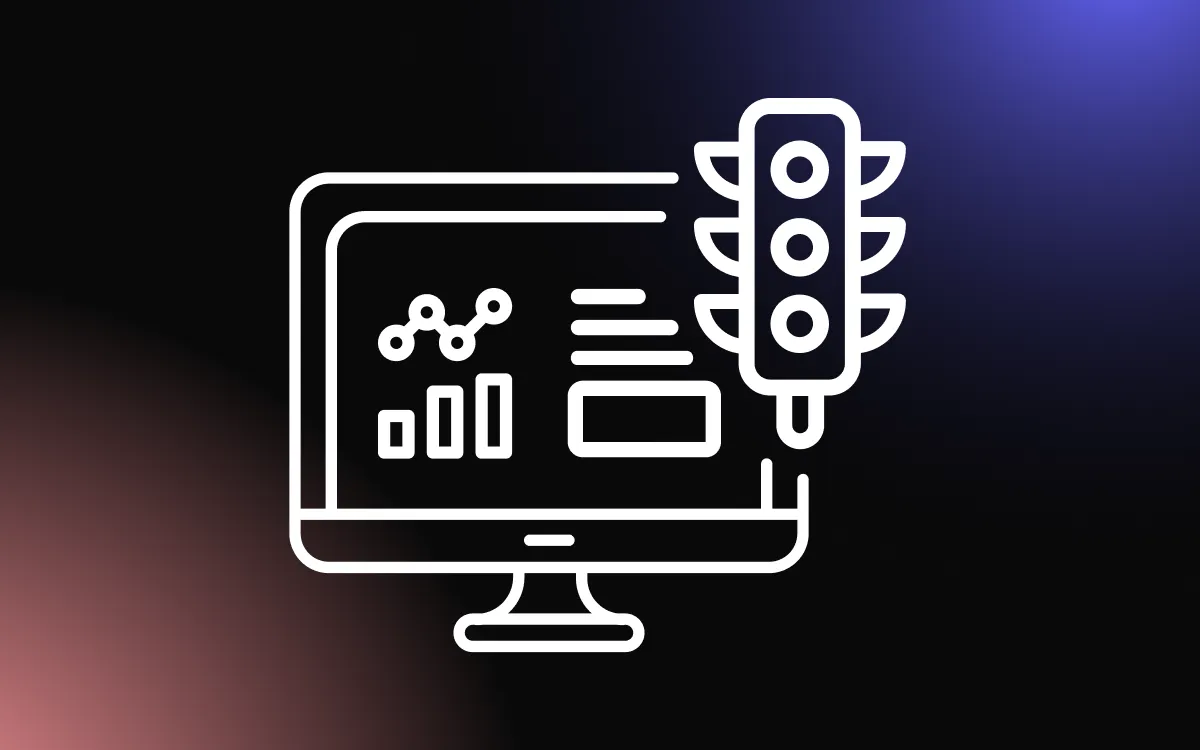
In today's digital age, your website is more than just an online presence — it's a powerful tool for building and nurturing relationships with your customers. It's the place where customers get to know your brand, understand your offerings, and interact with your business.
This article will guide you through the process of leveraging your website to foster strong, lasting relationships with your customers. We'll explore strategies ranging from personalization and interactive features to providing valuable content and exceptional customer service.
Establishing Customer Relationships Through Your Website

Developing a User-Friendly Interface
A user-friendly interface is the cornerstone of any website aiming to foster strong customer relationships. The design of your website plays a crucial role in shaping the user's first impression of your brand, and a well-designed, easy-to-navigate site can significantly enhance the user experience.
A user-friendly website should have a clean, intuitive layout that makes it easy for visitors to find what they're looking for. This includes a clear navigation menu, a search function, and well-organized content. The website should also be responsive, ensuring it displays correctly on all devices, from desktop computers to smartphones.
Moreover, the website should load quickly, as slow loading times can frustrate users and lead them to leave the site. Other elements of a user-friendly website include readable fonts, contrasting colors for better visibility, and easy-to-find contact information.
Offering Valuable Content
Content is king in the digital world, and offering valuable content on your website is a powerful way to foster customer relationships. By creating engaging blogs and articles, you provide your visitors with useful information, establish your brand as an authority in your field, and give users a reason to return to your site.
Blogs and articles should be well-written, informative, and relevant to your audience's interests. They should also be updated regularly to keep your content fresh and engaging. But don't limit yourself to text-based content. Multimedia content, such as videos, infographics, and podcasts, can also be highly effective. These formats can make complex topics more digestible and engaging, and they cater to different learning styles and preferences.
By offering a mix of high-quality written and multimedia content, you can cater to a wider audience, keep visitors on your site longer, and foster a deeper connection with your customers. This, in turn, can lead to increased loyalty and customer retention.
Ensuring Secure Transactions
In an era where online transactions are commonplace, ensuring the security of these transactions on your website is paramount. Customers need to trust that their sensitive information, such as credit card details and personal data, is safe when they make a purchase or sign up for a service.
Implementing robust security measures, such as SSL encryption, secure payment gateways, and two-factor authentication, can help protect your customers' data from cyber threats. Regularly updating your website's security features and conducting security audits can also help identify and fix potential vulnerabilities.
Utilizing Tools for Better Customer Interaction

Chatbots and Live Chat Features
In the digital age, immediate response and 24/7 availability are becoming increasingly important for customers. Implementing chatbots and live chat features on your website can significantly enhance customer interaction.
Chatbots, powered by artificial intelligence, can provide instant responses to common customer queries, even outside of business hours. They can handle multiple inquiries simultaneously, ensuring no customer is left waiting.
On the other hand, live chat features allow for real-time communication between your team and the customer. This can be particularly effective for handling complex queries that require a human touch.
Both these tools can drastically reduce response times and improve customer satisfaction. By providing immediate, personalized assistance, you can foster stronger relationships with your customers, leading to increased loyalty and engagement.
Feedback Forms and Surveys
Feedback forms and surveys are powerful tools to understand and cater to your customers' needs. They provide a direct line of communication between you and your customers, allowing you to capture their opinions, suggestions, and even complaints.
Feedback forms, often placed on various pages of your website, can help you gather specific insights about a user's experience. For instance, a form on a product page can help you understand what customers think about your products.
Surveys, on the other hand, can be used to delve deeper into customer needs and preferences. They can be used to gather data on a range of topics, from product preferences to customer service experiences.
Personalizing Customer Experience

Implementing Personalization Strategies
Personalization is a powerful strategy that can significantly enhance customer relationships. It involves tailoring your website's content and user experience to meet the individual needs and preferences of each visitor. This can make your customers feel valued and understood, which in turn can foster loyalty and encourage repeat business.
The importance of personalization in customer relationships cannot be overstated. Customers today expect personalized experiences. A study by Epsilon found that 80% of consumers are more likely to make a purchase when brands offer personalized experiences.
There are several techniques for website personalization. One of the most common is using cookies to track user behavior and preferences. This data can then be used to customize the content that each user sees. For example, you might show different product recommendations based on a user's browsing history.
Another technique is to use personalization in your email marketing. This could involve sending personalized product recommendations or offering special deals based on a customer's past purchases.
Personalization can also extend to customer service. For example, if a customer has a history of purchasing a particular type of product, customer service representatives can be briefed on this history and offer tailored advice and recommendations.
Implementing personalization strategies can require an investment in technology and data analysis. However, the potential benefits in terms of improved customer relationships and increased sales make it a worthwhile investment.
Using Analytics for Personalization
Analytics play a pivotal role in personalizing the customer experience on your website. By understanding customer behavior through analytics, you can tailor your website's content, design, and overall user experience to better meet the needs and preferences of your audience.
Understanding customer behavior with analytics involves tracking and analyzing various metrics, such as page views, bounce rates, session duration, and conversion rates. These metrics can provide valuable insights into how customers are interacting with your website.
For example, high bounce rates on a particular page might indicate that the content isn't resonating with your audience, while low conversion rates could suggest that your call-to-action isn't compelling enough.
In addition to these basic metrics, more advanced analytics can provide deeper insights into customer behavior. For instance, heatmaps can show you where users are clicking on a page, while session recordings can give you a real-time view of how users are interacting with your website.
There are several tools available for effective website analytics. Google Analytics is one of the most popular and provides a comprehensive overview of your website's performance. Other tools, like Hotjar and Crazy Egg, offer more advanced features like heatmaps and session recordings.
Encouraging Customer Loyalty Through Your Website

Reward Systems and Loyalty Programs
Reward systems and loyalty programs are powerful tools for fostering customer loyalty through your website. They not only incentivize repeat purchases but also create a sense of belonging and appreciation among your customers.
The impact of reward systems on customer loyalty is significant. When customers feel valued and rewarded for their loyalty, they are more likely to continue doing business with you.
Reward systems can take various forms, from points-based systems where customers earn points for every purchase, to tiered systems where customers unlock new benefits as they reach different levels of spending. The key is to ensure that the rewards are valuable and relevant to your customers.
Designing an effective loyalty program requires a deep understanding of your customers. What motivates them? What kind of rewards would they find most appealing? It's also important to make the program easy to understand and use. A complicated program with confusing rules can deter customers from participating.
Moreover, it's crucial to communicate the benefits of your loyalty program clearly on your website. Highlight the rewards customers can earn and celebrate their progress. This not only encourages participation in the program but also enhances the overall customer experience on your website.
Exceptional Customer Service
Exceptional customer service is a cornerstone of fostering customer loyalty. In the digital landscape, your website serves as a primary platform for delivering such service, making it essential to optimize it for customer support.
The elements of excellent online customer service revolve around accessibility, responsiveness, and personalization. Accessibility means making it easy for customers to reach out for support. This could be through visible and easy-to-find contact information, a dedicated 'Help' or 'Support' section, or integrated chat features.
Responsiveness is about timely and efficient handling of customer inquiries and issues. Customers value quick responses, so having a system in place to ensure prompt replies is crucial.
Personalization, on the other hand, involves tailoring your customer service to meet individual needs. This could mean addressing customers by their name, remembering their past interactions, or providing personalized solutions. These small touches can make a customer feel valued and understood, enhancing their overall experience.
Your website can serve as an effective customer service platform by integrating features like live chat, chatbots, FAQs, and support ticket systems. These tools can help streamline your customer service process, making it easier for customers to get the help they need and for your team to manage customer interactions.
Measuring the Success of Your Customer Relationship Efforts
Key Performance Indicators (KPIs) for Customer Relationships
Key Performance Indicators (KPIs) play a pivotal role in measuring the success of your customer relationship efforts. They provide quantifiable metrics that can help you assess the effectiveness of your strategies and make informed decisions for improvement.
One crucial KPI is customer retention rate, which measures the percentage of customers who continue to engage with your website over a specific period. A high retention rate indicates that your website successfully fosters strong customer relationships.
Another relevant KPI is the Net Promoter Score (NPS), which gauges customer loyalty by asking how likely they are to recommend your website to others. A high NPS suggests that customers are satisfied with their experience and are likely to promote your website, reflecting successful relationship-building efforts.
Customer lifetime value (CLV) is also a valuable KPI. It estimates the total revenue a customer can bring to your business over the course of their relationship with you. A rising CLV indicates that your efforts to foster customer relationships are leading to increased customer loyalty and spending.
Tools for Measuring Customer Relationship Efforts
In the digital age, numerous tools can assist in measuring the success of your customer relationship efforts. Google Analytics, for instance, is a powerful tool that provides insights into user behavior on your website. It can track metrics such as bounce rate, session duration, and pages per session, which can indicate the level of engagement and satisfaction of your customers.
Customer Relationship Management (CRM) systems are another invaluable tool. They can track customer interactions, purchases, and preferences, providing a comprehensive view of your customer relationships. CRM systems can also help identify trends and patterns in customer behavior, enabling you to tailor your strategies more effectively.
Survey tools, such as SurveyMonkey or Google Forms, can also be used to gather direct feedback from customers. This can provide insights into their experiences, preferences, and areas where improvements can be made.
Conclusion
In conclusion, your website is a pivotal touchpoint in the customer journey and plays a significant role in fostering customer relationships. By personalizing experiences, providing valuable content, facilitating easy communication, and ensuring a seamless user experience, you can transform your website into a relationship-building powerhouse.
Remember, fostering customer relationships is not a one-time effort but an ongoing process that requires consistency, responsiveness, and genuine care for your customers. With the right strategies, your website can become a hub of customer engagement and loyalty, driving business growth and success.



